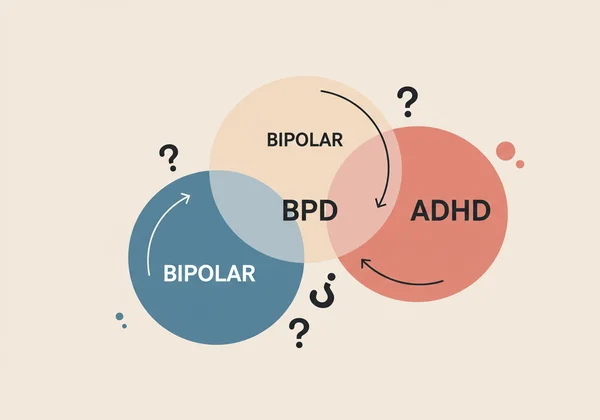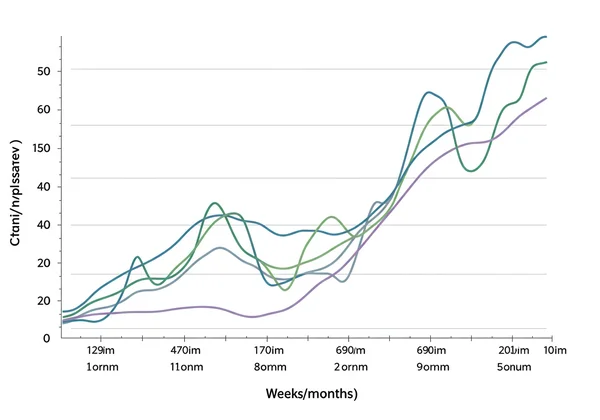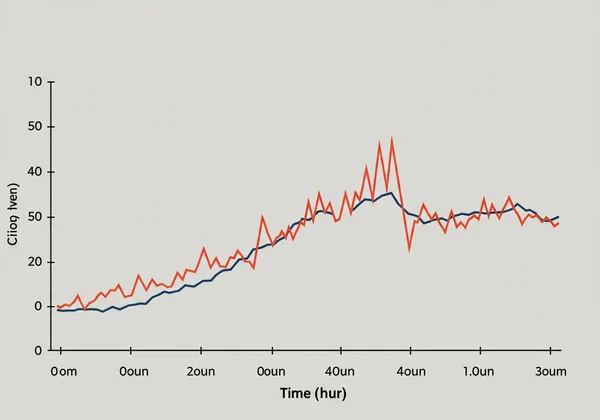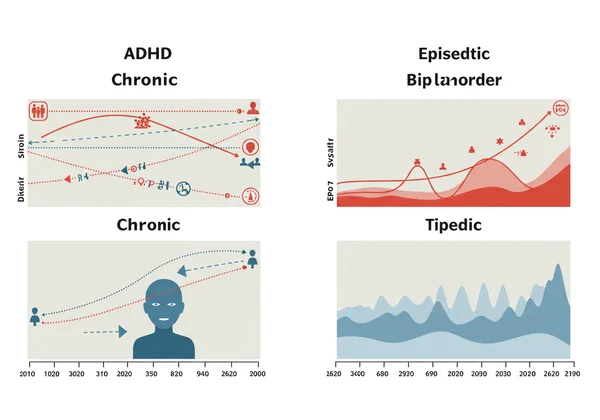Bipolar Test: Differentiating BPD, ADHD & Mood Swings
Feeling overwhelmed by intense mood swings, unpredictable bursts of energy, or deep emotional shifts? You're not alone. The journey to understanding your mental health can be confusing, especially when symptoms of different conditions overlap. Many people ask, How can I test if I am bipolar?, because the signs can closely resemble those of Borderline Personality Disorder (BPD) or even Attention-Deficit/Hyperactivity Disorder (ADHD). This can lead to uncertainty and a frustrating search for answers.
We're here to shed light on these differences. We will explore the distinct and overlapping characteristics of these conditions to help you make sense of your experiences. Understanding these differences is the first step toward empowerment, and our free bipolar test is a confidential tool designed to offer you initial insights on this path. If you feel ready to explore, you can take the test now.

Understanding Bipolar Disorder: Key Symptoms and Types
Bipolar Disorder is fundamentally characterized by distinct, significant shifts in mood, energy, and activity. These shifts are not just fleeting feelings; they are distinct, sustained episodes of depression and mania or hypomania. Think of it less like a daily emotional rollercoaster and more like distinct seasons of your mood, with each "season" lasting for days, weeks, or even months.
According to the Diagnostic and Statistical Manual of Mental Disorders (DSM-5), the defining feature is the presence of manic or hypomanic episodes. These are periods of abnormally elevated or irritable mood, accompanied by increased energy and goal-directed activity. These episodes are what primarily distinguish bipolar disorder from other conditions like major depression.
Bipolar 1 vs. Bipolar 2: Key Distinctions
The bipolar spectrum is broad, but the two most common diagnoses are Bipolar I and Bipolar II. The primary difference lies in the severity of the elevated mood episodes. Making this distinction is a key part of any professional bipolar 1 test or bipolar 2 test.
- Bipolar I Disorder: Defined by the presence of at least one manic episode. A manic episode is a severe period of elevated mood that lasts for at least one week and causes significant impairment in work, social life, or relationships. It may even require hospitalization to ensure safety. People with Bipolar I often experience depressive episodes as well.
- Bipolar II Disorder: Defined by a pattern of depressive episodes and at least one hypomanic episode. Hypomania is a less severe form of mania. While it involves a noticeable shift in mood and energy, it doesn't cause the same level of impairment as a full manic episode and never requires hospitalization.
What Does a Manic or Hypomanic Episode Feel Like?
So, what does a manic episode feel like? It's often described as feeling euphoric, incredibly energetic, and powerful—like you're on top of the world. Thoughts might race, you may talk faster than usual, and your need for sleep could dramatically decrease. This period can also be marked by heightened irritability, agitation, and impulsive behavior, such as spending sprees or reckless decisions.
A hypomanic episode shares these features but to a lesser degree. You might feel unusually productive, creative, and sociable. For many, hypomania feels good, which is why it can often go unrecognized as a symptom of a mood disorder. A comprehensive bipolar symptoms test can help you reflect on whether you've experienced these states.

BPD vs Bipolar: Untangling Emotional Dysregulation & Mood Shifts
One of the most common areas of confusion is the overlap between Bipolar Disorder and Borderline Personality Disorder (BPD). Both can involve intense emotions and impulsivity, which is why a bpd vs bipolar test is such a frequent search query. However, the underlying patterns and triggers for these mood shifts are fundamentally different.
The core distinction is the duration and trigger of the mood changes. Bipolar mood episodes are sustained states that last for days or weeks and often occur without a clear external trigger. In contrast, mood shifts in BPD are typically much more rapid, lasting for hours rather than days, and are almost always triggered by interpersonal events—like a perceived slight or fear of abandonment.
Core Features of Borderline Personality Disorder
BPD is a personality disorder characterized by a pervasive pattern of instability in interpersonal relationships, self-image, and emotions. Key features include an intense fear of abandonment, chronic feelings of emptiness, and difficulty with emotional dysregulation. This means people experiencing BPD feel emotions very intensely and struggle to return to a stable emotional baseline after being triggered. Their sense of self can also be unstable, shifting dramatically depending on their relationships.
Distinguishing Rapid Mood Shifts from Emotional Dysregulation
Imagine a graph of your mood. For someone with bipolar disorder, the graph might show long, sweeping waves representing weeks of depression followed by a week of mania. For someone with BPD, the graph would look more like a seismograph during an earthquake—with sharp, rapid spikes and falls throughout a single day, often in reaction to social interactions. These rapid mood shifts are a hallmark of BPD, whereas the sustained mood episodes define bipolar disorder.

ADHD vs Bipolar: Spotting Differences in Energy & Focus
Another common point of confusion is between Bipolar Disorder and ADHD. Symptoms like distractibility, restlessness, and impulsivity are present in both, making a differential diagnosis challenging. The key difference often lies in the nature of the symptoms: are they episodic or chronic?
ADHD is a neurodevelopmental disorder, meaning its symptoms are typically present from childhood and are chronic and persistent. The inattention and hyperactivity are a person's baseline. In Bipolar Disorder, these same symptoms (restlessness, distractibility) tend to manifest primarily during manic or hypomanic episodes. A person with bipolar disorder may have periods of normal or even slowed-down functioning during depressive episodes, which is not characteristic of ADHD.

Common Traits of ADHD Beyond Hyperactivity
While hyperactivity is a well-known sign, ADHD traits extend far beyond it. The core challenges often relate to executive functioning—the brain's management system. This includes difficulty with organization, time management, prioritizing tasks, and regulating attention. These struggles are a consistent part of life for someone with ADHD, not just during specific mood episodes.
Impulsivity and Restlessness: A Shared But Different Experience
Both conditions feature impulsivity and restlessness, but the context is different. In ADHD, impulsivity might look like frequently interrupting others or making hasty decisions as a consistent pattern of behavior. In Bipolar Disorder, a surge in impulsivity—like quitting a job on a whim or making a large, unplanned purchase—is typically a change from the person's usual self and occurs during a manic or hypomanic phase. The restlessness of an ADHD mind is constant, while the restlessness of mania is an acute, high-energy state.
Overlapping Symptoms: Why Differential Diagnosis Is Crucial
With so many overlapping symptoms, it's easy to see why confusion is common. Impulsivity, emotional intensity, and distractibility can be signs of Bipolar Disorder, BPD, or ADHD. This complexity underscores why a professional differential diagnosis is so vital. A qualified mental health provider can look at the full picture of your life, including the duration, context, and triggers of your symptoms, to arrive at an accurate understanding.
Why Self-Diagnosis Can Be Misleading
While researching your symptoms is an empowering step, the risks of self-diagnosis are significant. An incorrect self-diagnosis can lead to pursuing the wrong kind of support and treatment, causing frustration and delaying genuine recovery. Each condition requires a different therapeutic approach. What works for BPD (like Dialectical Behavior Therapy) is very different from the mood-stabilizing medication often essential for managing Bipolar Disorder.
The Role of a Bipolar Screening Test in Your Journey
So where does an online tool fit in? A scientifically-backed bipolar screening test, like the one we offer, is a valuable first step. It is not a diagnostic tool. Instead, think of it as an organized way to gather information about your experiences. Our free, confidential bipolar assessment test is based on the Mood Disorder Questionnaire (MDQ), a recognized screening instrument. The results can provide you with a clearer picture of your patterns, giving you a structured summary to share with a doctor or therapist. It helps turn vague feelings of "something is wrong" into specific points for discussion.

Your Journey to Clarity: Next Steps in Understanding Your Mood
Navigating the complexities of mood and emotion is a challenging but courageous journey. Understanding the key differences between Bipolar Disorder, BPD, and ADHD—sustained episodes vs. rapid shifts, and episodic vs. chronic symptoms—is a powerful step toward clarity. Remember, you don't have to figure this out alone.
If this guide resonates with your experiences, the next step is to gather more personalized information. We invite you to take our free, confidential Bipolar Test. It’s a simple, scientifically-grounded way to gain initial insights into your mood patterns and empower you for a conversation with a healthcare professional. Get instant insights today and take the first step toward understanding.
Frequently Asked Questions About Bipolar & Related Conditions
What is commonly mistaken for bipolar disorder?
Bipolar disorder is most commonly mistaken for major depression, Borderline Personality Disorder (BPD), and Attention-Deficit/Hyperactivity Disorder (ADHD). This is due to overlapping symptoms like mood swings, impulsivity, and changes in energy. The key to differentiation is examining the specific patterns, duration, and triggers of these symptoms with a professional.
How do you get tested for bipolar disorder?
A formal diagnosis for bipolar disorder can only be made by a qualified healthcare professional, such as a psychiatrist or psychologist. The process involves a comprehensive psychiatric evaluation, including a detailed discussion of your symptoms, personal history, and family history. While there's no blood test for it, tools like our online bipolar test serve as preliminary screening instruments to help you organize your thoughts before seeking a professional opinion.
What is the difference between bipolar 1 and 2?
The main difference is the severity of the elevated mood episodes. Bipolar 1 is defined by having at least one full-blown manic episode, which causes significant life disruption. Bipolar 2 is characterized by less severe hypomanic episodes that are not as impairing, along with major depressive episodes. Both are serious conditions that benefit from treatment.